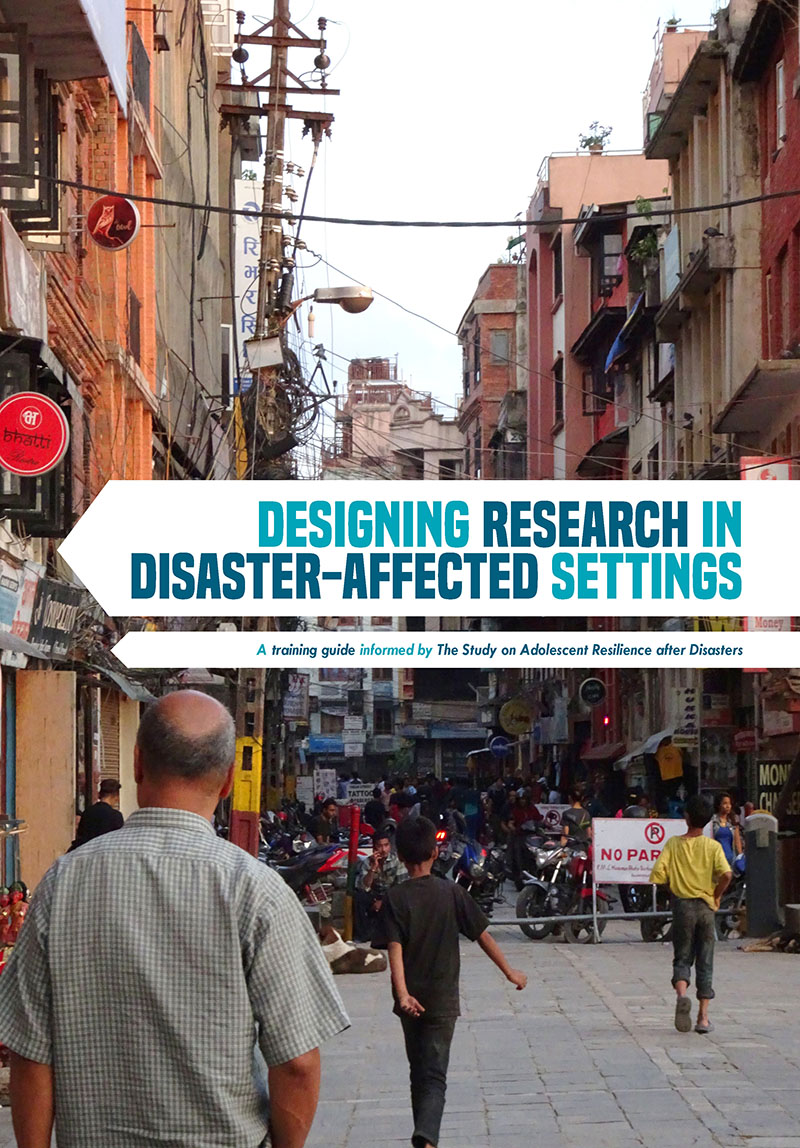You are here
Designing Research in Disaster-Affected Settings: A training guide informed by The Study on Adolescent Resilience
Designing Research in Disaster-Affected Settings: A training guide informed by The Study on Adolescent Resilience
To promote best practices in disaster research and evaluation, the Harvard FXB Center for Health and Human Rights partnered with Curtin University, Kunming Medical University, the Centre for Victims of Torture Nepal and CCOUC to develop a research training guide and accompanying study tools. The resulting manual provides guidance for creating effective research questions, building strong partnerships, and collecting data in emergencies, illustrated with real-life examples.
Designing Research in Disaster Affected Settings:
A Training Guide informed by The Study on Adolescent Resilience after Disasters
Data Collection Tools: To access the Qualitative Interview Guides and Quantitative Questionnaire, please email us for the log in details.
The rate of climactic disasters continues to rise. The international community has called for an expansion of the evidence base for disaster preparedness, response and policy, yet the challenges inherent in conducting research after disasters have restricted progress.
A new manual, Designing Research in Disaster Affected Settings: A Training Guide informed by The Study on Adolescent Resilience after Disasters, was developed to equip health professionals, responders and students with the skills and knowledge needed to conduct rigorous research and evaluation in a variety of disaster settings.
Building on the findings of The Study on Adolescent Resilience after Disasters, led by Dr Elizabeth Newnham, the Guide highlights strategies and techniques for conducting high-quality research in a variety of challenging emergency settings. A focus on mixed methods mental health research conducted in China and Nepal highlights the potential for impactful work designed to assist disaster-affected communities.
The purpose of the Research Training Guide is to illustrate ways in which research methods can be employed in the unique context of humanitarian crisis settings. The strategies described in the guide will be useful for studying the effects of disasters on health, and the effectiveness of interventions in improving health outcomes. Techniques for working with adolescents and diverse populations feature throughout.
The Guide provides directions and strategies for designing, implementing, and interpreting research, with a focus on building capacity. The importance of international partnerships and collaborative efforts is a theme infused throughout the Guide. Highlighted textboxes outline the application of each strategy in The Study on Adolescent Resilience after Disasters, and critical lessons learned.
The Guide covers the following research components:
- Designing research protocols and sampling strategies
- Building international partnerships
- Considering research ethics and seeking approvals
- Providing training for research assistants
- Using qualitative methods
- Using quantitative methods
- Conducting risk assessments
- Using self-report measures
- Working with diverse populations
- Disseminating findings
The Research Training Guide is oriented to university students, health professionals and novice research personnel who are interested in developing skills in research that can be applied to disaster and emergency settings. The techniques described are applicable to the fields of public health, medicine, psychology and allied health sciences.
Disclaimer: The views and opinions expressed in this Research Training Guide are those of the authors and do not necessarily reflect the views of the Hong Kong Jockey Club Disaster Preparedness and Response Institute.

Harvard FXB Centre
Harvard T.H. Chan School of Public Health
Curtin University
Kunming Medical University
Centre for Victims of Torture, Nepal
CCOUC
Jessica E. Tearne
Xue Gao
Claire Mitchell
Samantha Sims
Feng Jiao
Bhushan Guragain
Lajina Ghimire
Satchit Balsari
Emily Y.Y. Chan
Jennifer Leaning



